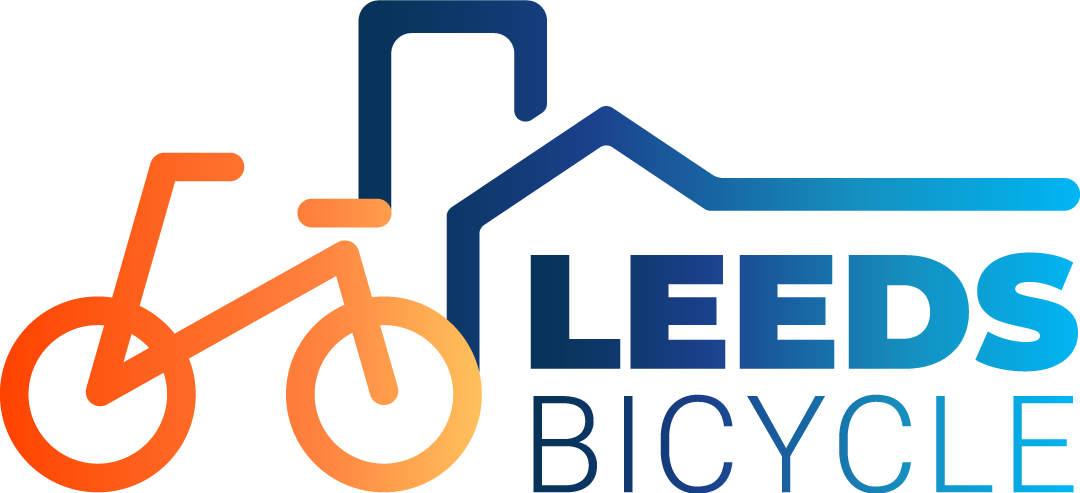“`html
Struggling to shed those stubborn belly pounds? Discover the dynamic and refreshing world of cycling for weight loss. Whether you’re curious about the effectiveness of cycling in targeting belly fat or wondering how many pedal strokes are needed each day to see results, this article dives deep into the transformative power of cycling. From exploring the myriad benefits of biking to weight loss, creating tailored cycling plans, and integrating the practice into your daily routine, we’ve covered it all. Learn how to effectively mix cycling workouts with a healthy diet and use technology to track your progress, all while exploring indoor options and insights from cycling enthusiasts on social forums. Whether you ride indoors or out, steer your fitness journey in a new direction with our comprehensive guide.
“`
Can You Lose Belly Fat by Cycling?
Cycling is an excellent way to burn calories and contribute to overall weight loss, including belly fat.
- Burning Calories:
- Cycling is a calorie-burning activity that can help you shed those extra pounds around your midsection.
How Much Can You Burn?
The number of calories burned during cycling depends on several factors, including your weight, intensity level, and duration of the ride.
- A 154-pound person cycling at a moderate pace for 30 minutes can burn approximately 200-250 calories.
- A 190-pound person cycling at a vigorous pace for 45 minutes can burn around 400-500 calories.
Combining Cycling with Diet for Optimal Results
To effectively lose belly fat, it’s essential to combine regular cycling with a balanced diet and healthy eating habits.
- Eat a high-protein diet to help build and maintain muscle mass.
- Incorporate plenty of fruits, vegetables, whole grains, and lean protein sources into your meals.
- Stay hydrated by drinking plenty of water before, during, and after your rides.
Tips for Effective Cycling Workouts
To maximize your calorie burn and get the most out of your cycling workouts, try these tips:
- Vary your route and terrain to keep your workouts interesting and challenging.
- Incorporate interval training to boost your metabolism and burn more calories.
- Make sure to warm up and cool down properly before and after each ride.
Conclusion
While cycling alone may not be enough to lose belly fat, combining regular cycling with a healthy diet and lifestyle changes can lead to significant weight loss and improved overall health.
How Much Should I Cycle a Day to Lose Weight?
To effectively lose weight through cycling, it’s essential to understand how many calories you burn during each session.
- Cycling is an excellent cardiovascular exercise that burns calories, improves cardiovascular health, and boosts mood.
- The number of calories burned during cycling depends on several factors, including your weight, pace, and duration of the ride.
Calorie Burn Calculation
A general rule of thumb is that a 154-pound person cycling at a moderate pace burns approximately 600 calories per hour.
- However, this number can vary depending on individual factors, such as fitness level and terrain.
- To give you a better idea, here are approximate calorie burn estimates for different weights:
- 120 pounds: 450-550 calories/hour
- 140 pounds: 500-650 calories/hour
- 160 pounds: 550-700 calories/hour
- 180 pounds: 600-750 calories/hour
- 200 pounds: 650-800 calories/hour
Daily Cycling Goals for Weight Loss
To lose weight, aim to cycle for at least 30 minutes per session, ideally 5-7 times a week.
- This translates to a total weekly cycling time of around 150-210 minutes.
- You can adjust your daily cycling goals based on your individual calorie needs and fitness level.
Tips for Effective Weight Loss Through Cycling
In addition to regular cycling sessions, consider incorporating these tips into your routine:
- Eat a balanced diet with plenty of fruits, vegetables, whole grains, and lean protein sources.
- Stay hydrated before, during, and after cycling sessions.
- Get enough sleep each night to aid in recovery and muscle growth.
- Combine cycling with strength training exercises to build overall muscle mass.
Conclusion is Not Required

Can I Lose Weight by Cycling 30 Minutes a Day?
Cycling for 30 minutes a day can indeed contribute to weight loss, but it depends on several factors.
- Burns Calories: Cycling for 30 minutes can burn approximately 200 to 400 calories, depending on your intensity and weight.
- Calorie Deficit: A calorie deficit is essential for weight loss, and cycling can help create this deficit.
However, weight loss ultimately depends on a combination of factors, including diet, overall physical activity level, and individual metabolism.
To maximize weight loss through cycling, consider the following:
- Increase Intensity: Gradually increase the intensity of your rides to boost calorie burn.
- Vary Routes: Mix up your routes to keep your workouts interesting and prevent plateaus.
- Combine with Diet: Pair regular cycling with a balanced diet to support weight loss efforts.
- Achieve Consistency: Regularly schedule and stick to your cycling routine for optimal results.
For more information on cycling techniques, trail guides, and DIY repair tips, visit our website at Leeds Bicycle .
Additionally, check out these reputable resources for further guidance on cycling and weight loss:
-
Cycling Weekly offers expert advice on cycling techniques and training plans.
-
The British Cycling website provides valuable information on cycling safety, nutrition, and fitness.

The 303030 Rule for Weight Loss
The 303030 rule is a popular diet trend that involves consuming 30 grams of protein within 30 minutes of waking up and then getting 30 minutes of low-intensity exercise.
- This rule was popularized on social media platforms, particularly on TikTok, where millions of users have followed the trend.
- The idea behind the 303030 rule is to kickstart your metabolism and energy levels by combining protein intake with physical activity.
- Protein plays a crucial role in muscle growth and repair, making it essential for individuals who engage in regular exercise or want to lose weight.
- Low-intensity exercise, such as yoga or brisk walking, can help increase blood flow and oxygenation to the muscles, preparing them for more intense workouts later in the day.
Benefits of the 303030 Rule
- Improved muscle recovery and growth
- Increased energy levels and alertness
- Boosted metabolism and weight loss
- Enhanced mental clarity and focus
How to Implement the 303030 Rule
- Start by consuming 30 grams of protein within 30 minutes of waking up. This can be achieved through a combination of foods such as eggs, Greek yogurt, nuts, and seeds.
- Follow up with 30 minutes of low-intensity exercise, such as yoga or brisk walking.
- Gradually increase the intensity and duration of your workout as you become more comfortable with the routine.
- Make sure to stay hydrated throughout the day by drinking plenty of water and limiting sugary drinks.
Tips and Variations
- Experiment with different types of protein sources, such as plant-based options like tofu and tempeh.
- Incorporate strength training exercises into your low-intensity workout routine to boost muscle growth and tone.
- Consider working out outdoors, such as going for a walk or jog in a nearby park, to increase exposure to natural light and fresh air.
What Exercise Burns the Most Belly Fat?
To effectively burn belly fat, it’s essential to engage in regular cardiovascular exercise, which can be achieved through various activities.
- High-Intensity Interval Training (HIIT) : This involves short bursts of intense exercise followed by brief periods of rest. HIIT has been shown to be highly effective in burning belly fat due to its ability to increase excess post-exercise oxygen consumption (EPOC), leading to increased caloric expenditure.
- Cycling : As a low-impact exercise, cycling is an excellent option for those looking to burn belly fat without putting excessive strain on their joints. Stationary cycling or using a spin bike at home can be just as effective as outdoor cycling.
- Swimming : Swimming is another low-impact exercise that can help burn belly fat while providing a full-body workout. Its buoyancy reduces the impact on joints, making it suitable for people with mobility issues or chronic pain.
- Running : Running is a high-intensity exercise that can help burn belly fat quickly. However, it may not be suitable for everyone, particularly those with joint issues or mobility problems.
- Jumping Rope : Jumping rope is a high-intensity exercise that can be done anywhere, making it an excellent option for those who want to burn belly fat at home. It’s also a great way to improve cardiovascular fitness and coordination.
Remember to combine these exercises with a balanced diet and a healthy lifestyle to achieve optimal results. It’s also essential to consult with a healthcare professional before starting any new exercise program.
Tips for Effective Belly Fat Burning:
- Avoid sugary drinks and foods high in saturated fats.
- Incorporate strength training exercises to build muscle mass.
- Get enough sleep to aid in weight regulation and metabolism.
- Stay hydrated by drinking plenty of water throughout the day.
Additional Resources:
For more information on how to burn belly fat effectively, visit our website at Leeds Bicycle and explore our articles on fitness and nutrition.

The 80/20 Rule to Lose Weight
The 80/20 rule, also known as the Pareto principle, suggests that 80% of results come from 20% of efforts. In the context of weight loss, this means focusing on making healthy choices most of the time and allowing for occasional indulgences.
- Eat nutrient-dense foods 80% of the time, such as fruits, vegetables, whole grains, lean proteins, and healthy fats.
- Allow for 20% of daily calories to come from less healthy options, such as processed snacks or takeout.
- Focus on portion control and mindful eating to maintain a balanced diet.
- Incorporate regular physical activity, such as walking, cycling, or strength training, to support weight loss goals.
- Get enough sleep and manage stress levels to support overall health and well-being.
Benefits of the 80/20 Rule
The 80/20 rule offers several benefits for weight loss, including:
- Increased flexibility and reduced guilt around food choices.
- Improved nutrient intake and reduced risk of chronic diseases.
- Enhanced motivation and adherence to a healthy lifestyle.
- Greater sense of control and confidence in achieving weight loss goals.
Realistic Expectations
It’s essential to have realistic expectations when implementing the 80/20 rule. Weight loss takes time, patience, and consistency. Aim to lose 1-2 pounds per week for a sustainable and healthy weight loss journey.
Conclusion
The 80/20 rule provides a flexible and sustainable approach to weight loss. By focusing on making healthy choices most of the time and allowing for occasional indulgences, individuals can achieve a balanced and enjoyable relationship with food and exercise. Remember to stay consistent, patient, and kind to yourself throughout your weight loss journey.

0 Comments